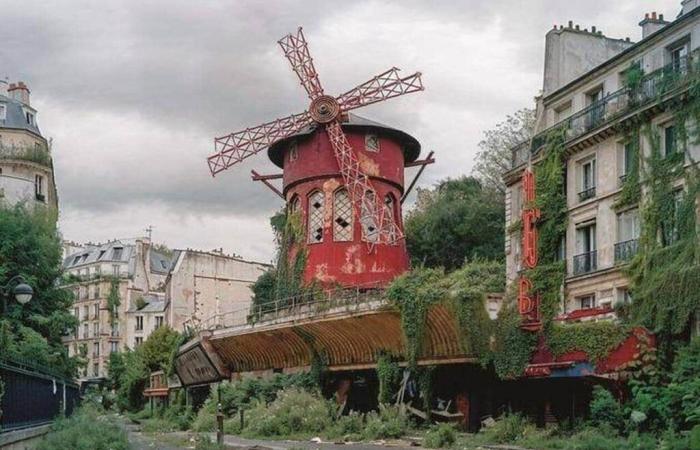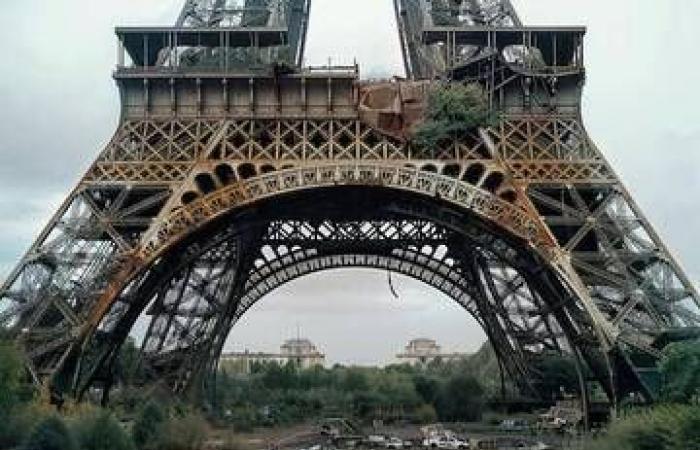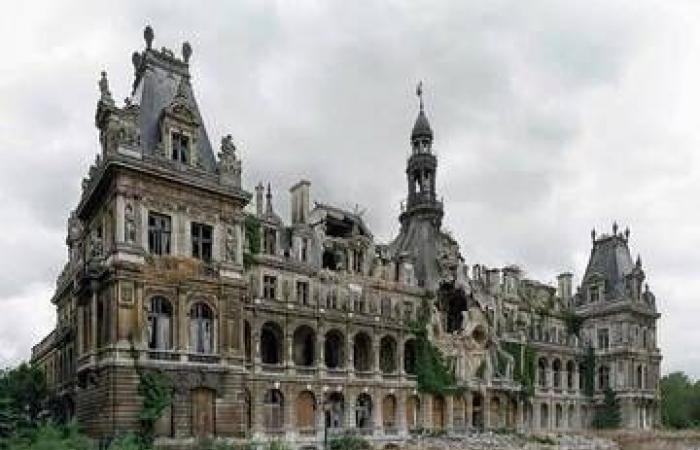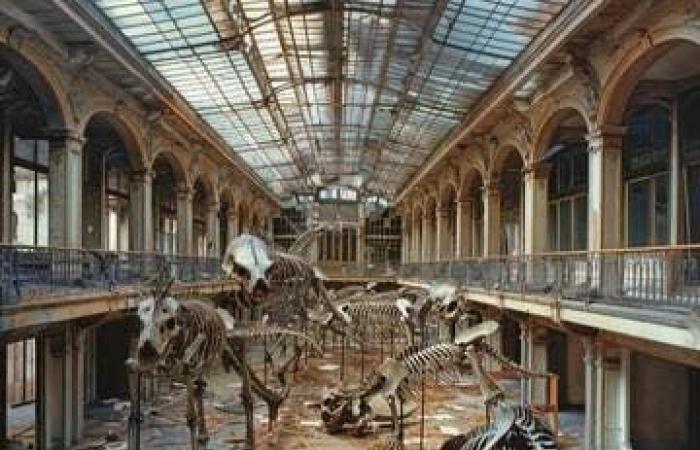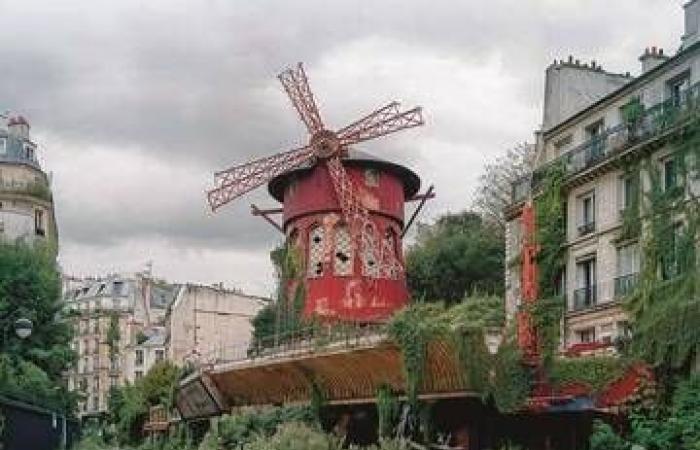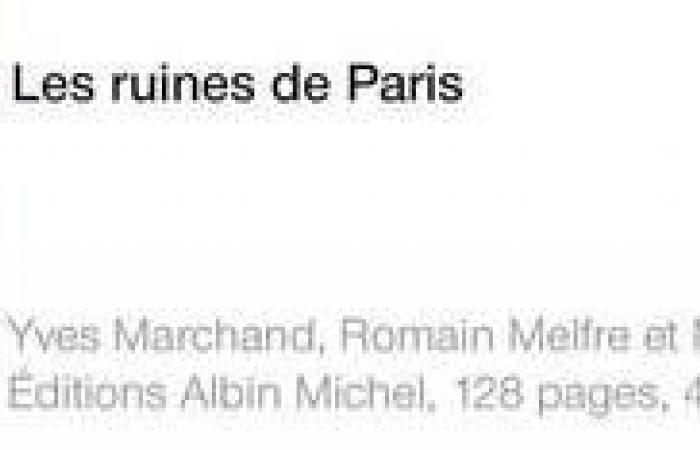The streets of Paris reclaimed by vegetation, the deserted museums, the Eiffel Tower in ruins… Photographers Yves Marchand and Romain Meffre imagined how the French capital would evolve if it found itself left to its own devices. They used artificial intelligence to create dozens of fictitious views of the city. The evening edition offers you a selection.
“If Paris were in ruins, where would we go and what would we take a photo of? » This is the question that Yves Marchand and Romain Meffre asked themselves when they started working on their project in early 2024. These two photographers have long specialized in contemporary ruins and urbex (contraction of the Anglo-Saxon expression “ urban exploration”), a discipline which consists of exploring abandoned places. Usually, they feature real places, abandoned by humans for decades. They became known in particular by immortalizing the post-apocalyptic landscapes of the American city of Detroit in 2010, from which they wrote a book.
This time, they wanted to imagine what the French capital would look like if it suddenly found itself left to its own devices. And to bring this dystopia to life, they decided to use artificial intelligence (AI). A tool which, since its large-scale development in 2023, foreshadows radical changes for the professional photography world. “We are facing a paradigm shift, a bit like the painters of the 19the in the face of the appearance of photography, even if in reality the comparison seems quite weak compared to the scale of the phenomenon”comment the two artists.
Read also: This is what would happen on Earth if humans suddenly disappeared
For this project, Yves Marchand and Romain Meffre used sophisticated AI such as Midjourney, coupled with Photoshop editing software. Even though most of the work is done by computers, generating the images was no easy task. The two artists had to “prompt” – that is, give precise textual instructions to the software – carefully to achieve the expected images. “AIs, for example, have a tendency towards emphasis that must be temperedthey continue. Sometimes, the architectures generated were spectacular, because they were baroque and grandiloquent, but we should not “fall” into this exaggeration. In short, the line between what seemed acceptable to us and what was not was sometimes subtle. »
In total, the photographers worked on more than 52,000 images, which required more than 1,000 hours of work. They finally selected 80. The result is all the more chilling because it is particularly realistic, translating a very realistic post-apocalyptic vision of the capital, seeming straight out of a series like The Walking dead… minus the zombies. We discover famous places such as the Champ de Mars, the Moulin Rouge, the Louvre pyramid and the town hall, in a state of disrepair which gives us pause for thought about the world that will succeed us, when humans have disappeared.
Read also: 10 surprising photos that show what Earth would look like if humans disappeared
Yves Marchand and Romain Meffre also worked on fictitious places, while remaining faithful to reality, like this abandoned square, with its bistro tables and its facades given over to vegetation, or this deserted café, as if customers had suddenly abandoned the counter. A vision that is both poetic and striking of the “city of lights” falling into darkness. These surprising images fueled a book, The ruins of Paris (co-signed with the writer Nathan Devers), as well as an exhibition, visible at the Polka gallery (12 rue Saint-Gilles, in Paris) until January 18, after a visit to the Grand Palais at the beginning of November. The evening edition offers you a selection of these images, commented by their authors…
Abandoned terraces
“To generate the images of abandoned cafes, we mixed photos of active establishments and various abandoned places that we had immortalized. We then gave textual guidance to the artificial intelligence. Midjourney offered us four different visuals each time. Little by little, through textual indications and suggestions for new images that we referenced, we were able to refine the results. »
The Eiffel Tower between rust and ruins
“For the most emblematic monuments of Paris, Midjourney has been sufficiently trained (the software already has a solid database) and therefore manages to fairly accurately reproduce buildings like the Eiffel Tower, the Arc de Triomphe or Notre Dame. -Lady. On the other hand, if you ask for a representation of the Pompidou center or the Montparnasse tower, the result will be much more approximate, and the task becomes more laborious. We had to mix a certain number of images of real monuments and textual indications (the famous prompts) to gradually approach a plausible result. […] Each image required a sequence of different steps and numerous back and forths between Midjourney, Photoshop and AI extrapolation tools. »
Read also: Without this wealthy American family, the Palace of Versailles might have remained in ruins
City Hall’s fight against time
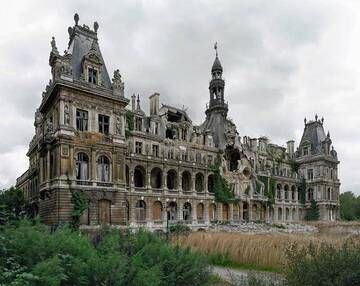
“For certain images, the starting point was a historical reference. This is the case of the town hall, which was one of the most emblematic ruins left following the battles of the Commune of 1871, with its monumental facade and its burnt village hall. It was therefore important for us to make an image of the building. To do this, we mixed vintage photographs that we colorized using AI, then retouched, and mixed them with images of the current state. »
The ghosts of the Natural History Museum
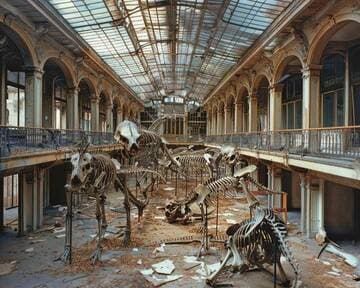
“We also reimagined places that had experienced periods of abandonment in the 1970s and 1980s, as was the case with the Grande Galerie of the Natural History Museum, or the Orsay train station. »
The Moulin Rouge surrounded by green
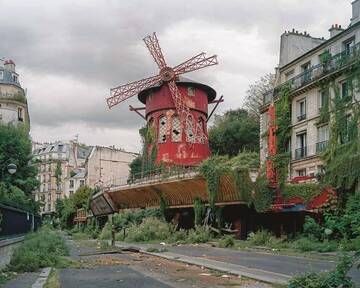
“We had some problems with this image of the Moulin Rouge. It seemed impossible to generate a state of abandonment, a state of patina on the building. One evening, we produced almost a hundred requests, over several hours, insisting on having “chipping paint”, “decaying the wings”. Tired, we decided to postpone it until the next day. The following night, the wings of the mill really fell (during the night of April 24 to 25, 2023), for no apparent reason… Fortunately, the state of the other monuments that we generated tends to prove that it was just that. a very strange coincidence! »


